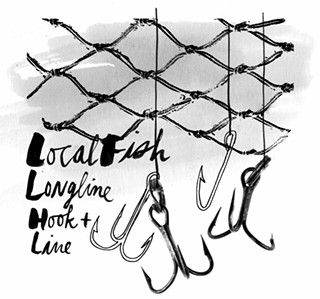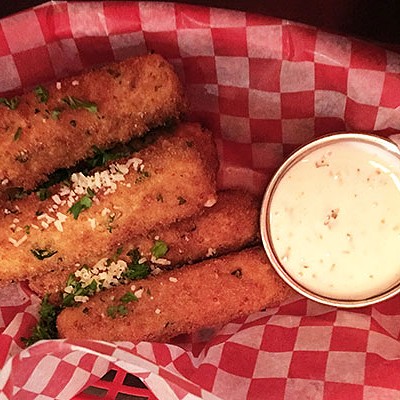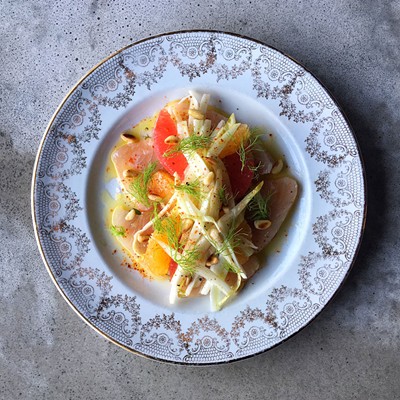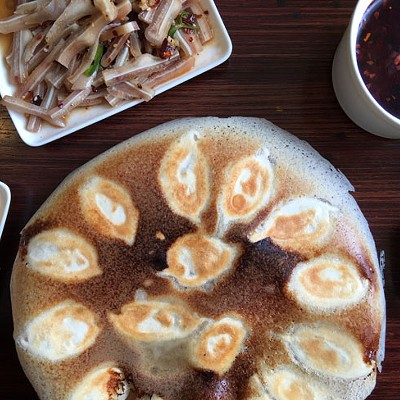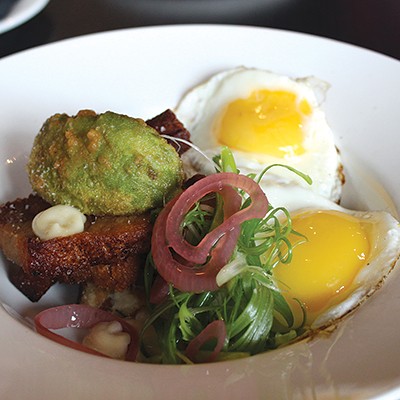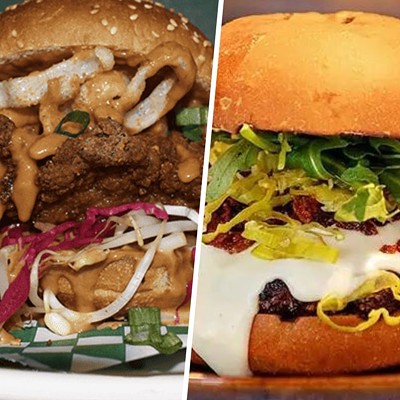One of the great joys of living in Nova Scotia is sampling the endless supply of fresh seafood, fresh from the wharf to the table. Right?
Well, maybe not.
It turns out a lot of what's sold at local supermarkets and restaurants is caught or farmed far away and shipped here frozen. Some of it is caught nearby but flown off to Asia, where it's processed and frozen and then sent back. So much for "fresh."
As for "endless supply," think again. Dalhousie University biologist Boris Worm warns us that if we keep going about like we have been, happy to eat wastefully caught fish and seafood, all seafood-producing fisheries on earth will collapse by 2048. In short: no fish. At all.
The good news is there's plenty of opportunity to eat sustainable seafood. We can enjoy our fish meals guilt-free and help turn what has been a destructive fishing industry in a more positive direction. If we act now, our children might be able to enjoy seafood in their adulthood.
Eating sustainable seafood is roughly equivalent to eating organic farm foods, explains Susanna Fuller, "except we're 20 years behind the organic food movement. We have a lot of learning to do, and a lot of explaining to do. People hardly know where to start."
Fuller, a Dal oceanographer who works with the Ecology Action Centre on marine issues, has been introducing concerned fishers to organic farmers so they can learn the ins and outs of marketing their product in a retail world dominated by giant distributors who care nothing about sustainability. As for consumers, Fuller has this bit of advice: "Ask questions! Find out where and how your seafood is caught. If the person selling it doesn't know, tell him you want to know. If they hear it from 10, 20 people a day, they'll start caring."
The easiest way to shop for sustainable fish is to carry a cheat sheet published by Sea Choice, an organization devoted to informing consumers about fishing practices. The wallet-sized cards are available at the Ecology Action Centre, or online at: www.seachoice.org. The card has a west coast orientation, but Fuller is hoping to get a revised Atlantic Canada version out soon.
The Sea Choice website gives one page summaries for the sustainability of each type of fish and even academic research papers backing up their findings. But there are four general rules of thumb for buying sustainable seafood:
1. Local is best.
2. Shellfish caught in traps (lobster and some shrimp) or that are hand-picked (scallops) are generally good. Avoid anything caught through dredging. Unfortunately, this usually includes Atlantic clams.
3. Bottom fish—haddock, halibut and some cod—should be caught with hook-and-line. Any bottom fish caught by trawling should be avoided, as trawling destroys the sea floor habitat. Most bottom fish are caught this way.
4. Pelagic fish—those that live in the higher regions of the ocean—should be caught either by longline (bigeye and yellowfin tuna) or by harpoon (swordfish).
There are also issues of seasonality and farmed fish, which differ depending on species and upon who you talk to. The Sea Choice website goes into more detail.
You can also buy sustainable seafood at a growing number of local restaurants.
"Everything we do is sustainable," says Dennis Johnston at Fid Restaurant. "I've been part of the Slow Food movement since 1989, and we've always been using sustainable seafood. It's great to see the interest in it now. This week Fid has swordfish, tuna, scallops, clams and more on the menu.
"Basically, we respect the population," he says. "About 10 years ago Iceland went to hook-and-line with their halibut and cod. I went there, and the cod fillets were three inches thick. There are ways to do this right and end up with excellent fish."
"Even if you don't care about the earth, quality alone says you should do this," agrees Lil MacPherson at The Wooden Monkey. "Line-caught fish is one fish brought up at a time. Trawling brings up hundreds of thousands of fish at once. That's one hell of a bruised, ripped-up fish when you get it in. You can spot the difference a mile away."
The Wooden Monkey serves only sustainable seafood, including line-caught haddock, shrimp, lobster and crab, among others. Much of their fish is bought from Mike's Fish at the Halifax Farmers' Market.
"I'm striving to be 100 percent sustainable," says Mike McGlone, owner of Mike's Fish. "First I consider the environmental impact—the impact on the fishery, and then the impact on the local economy. I'm not at 100 percent yet. I can't put a percentage on it, but I try to get the message across and I label and push the line-caught fish."
McGlone gets most of his fish from Sambro Fisheries, a processor serving local fishers. "Basically, it's caught between Cape Breton and Yarmouth," he says. "I can usually tell you the name of the person who caught the fish."
But there are difficulties procuring local sustainable fish, he says. "There's a local fisherman I've talked to, he has one boat and catches with hook and line. I've been trying to buy from him, but he says, "All my fish goes to New York.' Until I can buy the whole boat, I can't get it, and I can't buy the whole boat until I have the demand for it."
McGlone does see more interest in sustainable seafood, and plans to turn his now-weekly booth into a daily operation when the Farmers' Market moves to the waterfront.
The future of seafood depends on the industry making the switch to sustainability, he says. "I'm 30 years old, so I'm going to be working for another 30 or 40 years, and I don't want to rely on fish. I have no idea where this business is going to be in 20 years, and nobody else does, either. No one knows how many fish are out there, if they're going to be around that long. I'm keeping my day job."
Johnston, at Fid, shares the concern. "People think the food will keep coming," he says, "but it won't, unless we go about it the right way. If don't start fishing in a better way, if we don't start eating responsibly, my daughter's kids might not know what seafood for dinner is, they might never experience it.
"This generation is done, it's too late. We have to get the younger generation aware."
To that end, Johnston's organizing an annual trip to the Farmers' Market for students at the new Citadel High, to teach them about sustainable and organic food. He's also working with school officials to serve one slow-food dish each day in the school cafeteria.
That kind of activism seems to pervade the sustainable seafood movement.
"We have the power!" says MacPherson at The Wooden Monkey. "It's us, the consumer, who are the weak link in the corporate chain of providing us with bad choices.
"We're trying to educate ourselves and educate everyone else. We give out the Sea Choice card at the restaurant—you don't have to buy anything, just come in and pick one up. We have to do this. We just have to. There's no choice."
Tim Bousquet is a freelance journalist who writes Sustainable City, a bi-weekly environmental column, for The Coast.
Download: Canada's Seafood Guide & Drop cards for Restaurants and Markets

